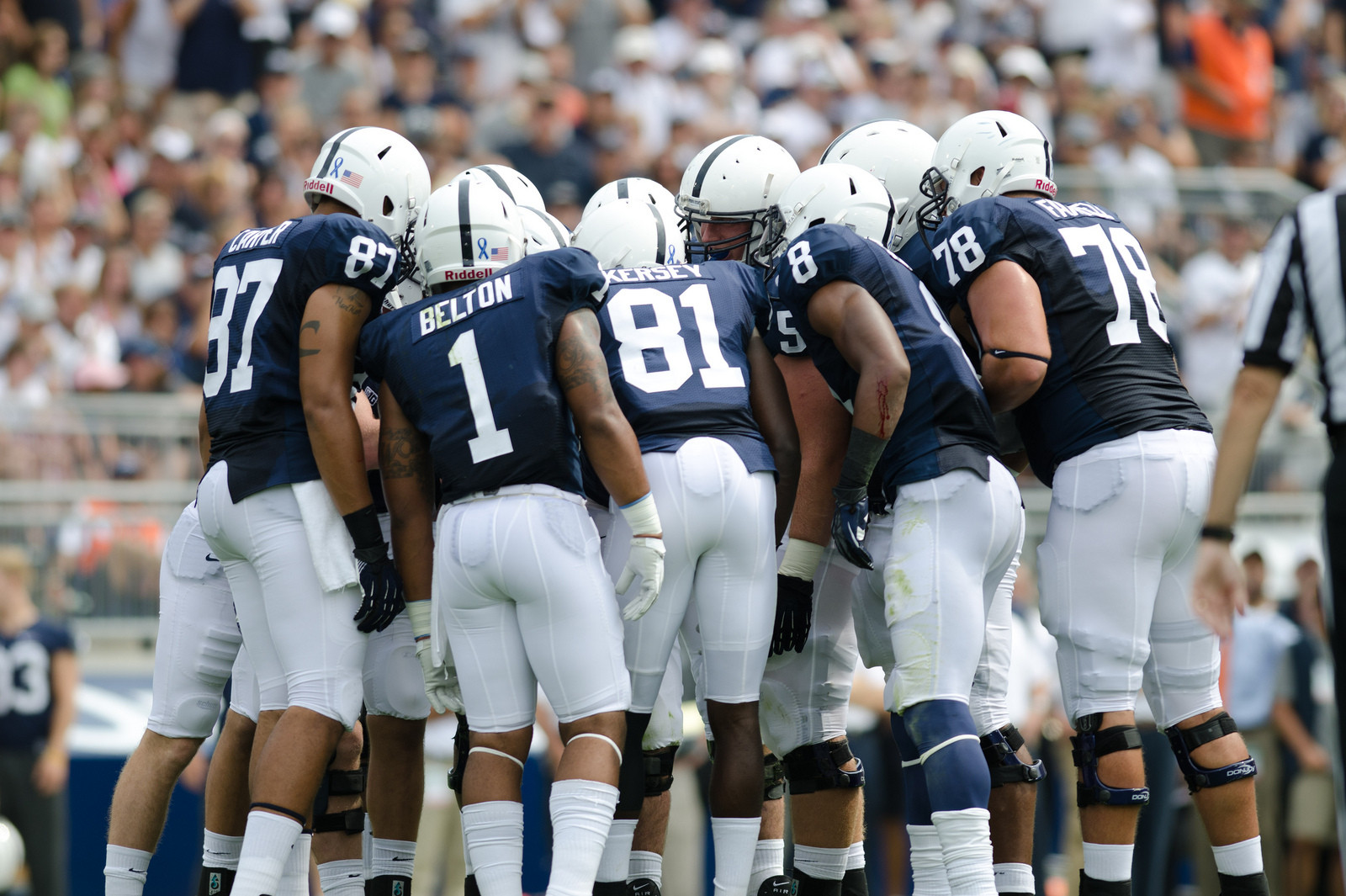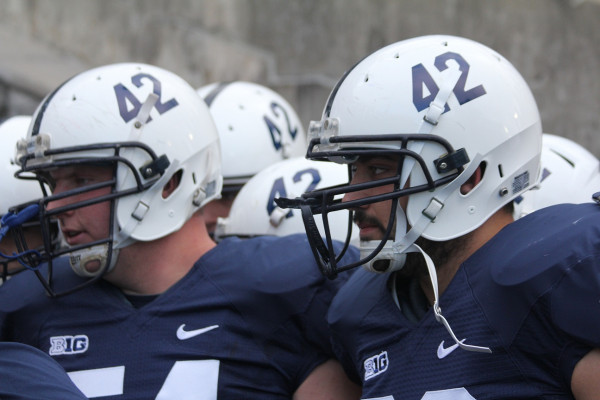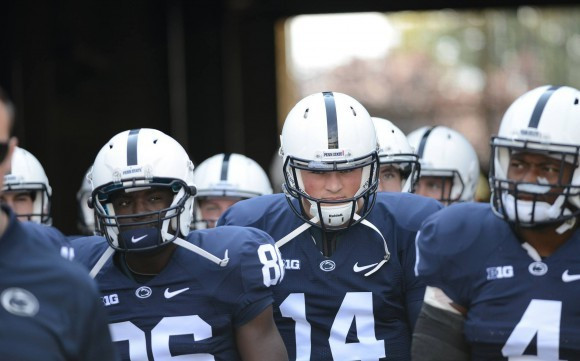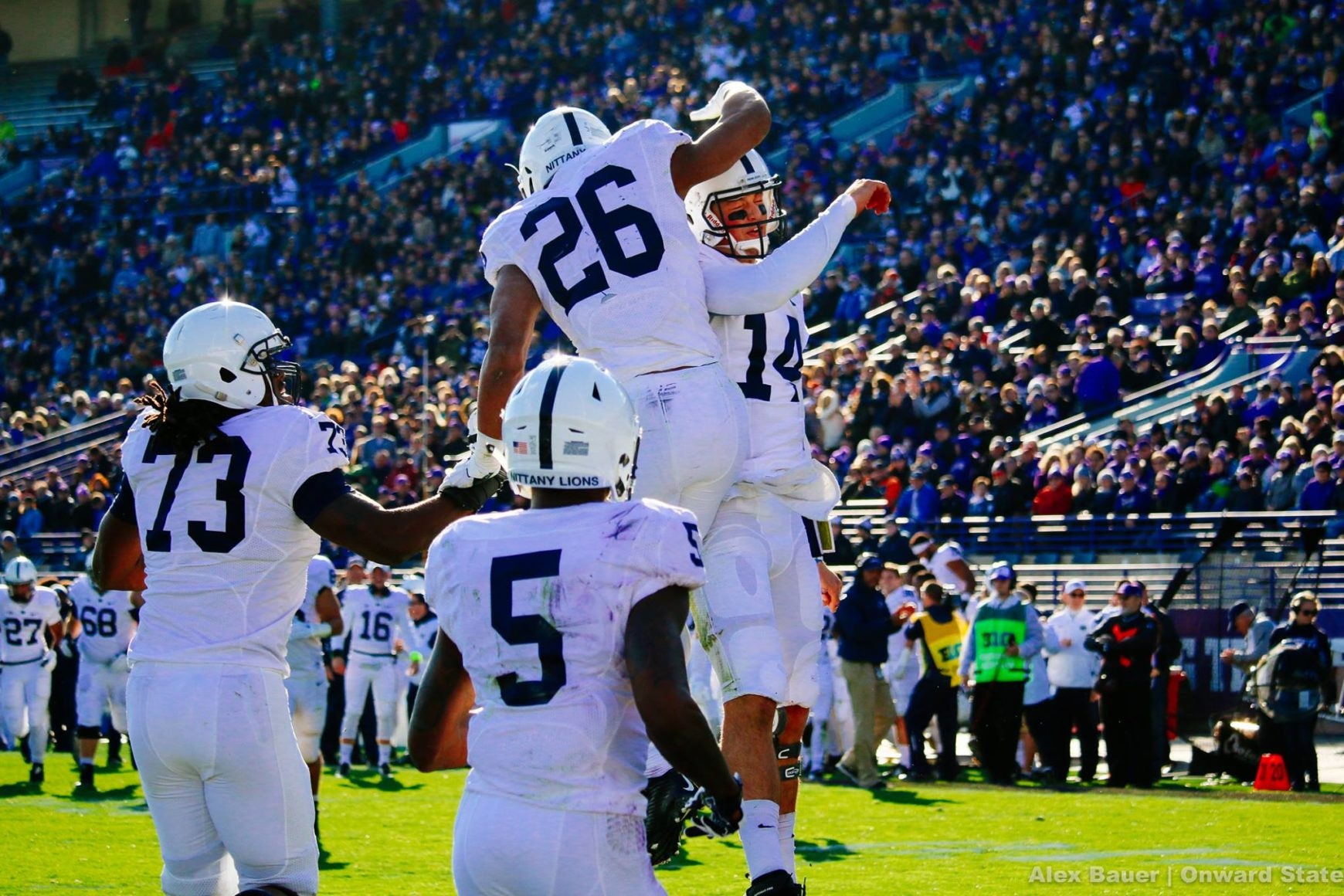Penn State football is renowned for its time-honored traditions and iconic imagery, and at the heart of this visual legacy are the Penn State Football Uniforms. As Homecoming weekend approaches, the Nittany Lions are set to don their celebrated “Generations Of Greatness” throwback uniforms for their game against Illinois, a powerful nod to the program’s rich heritage.
While simplicity defines the modern Penn State look, the journey of the Penn State football uniforms has been anything but static since the team’s inaugural game in 1887. In anticipation of this weekend’s tribute to the past, let’s delve into the annals of history to explore the fascinating transformation of these emblematic threads.
The Genesis: 1887
In 1887, Penn State embraced the burgeoning sport of college football, fielding its first team on the hallowed grounds of Old Main Lawn against Bucknell. In these nascent days of college football, the sport lacked the structure and widespread appeal it commands today. Players were responsible for procuring their own uniforms and equipment, resulting in a chaotic mix of colors and styles on the field.
According to football historian Mark Harrington, this sartorial disarray even led to on-field confusion, with Penn State players occasionally mistaking opposing players for teammates. To foster team unity and clarity, the Nittany Lions sought to adopt uniform colors. They initially chose pink and black, Penn State’s original school colors, marking the first official Penn State football uniforms.
Transition to Blue and White: 1890
After three seasons and nine games, the pink and black uniforms of the Penn State football team had endured considerable wear. Repeated washing caused the pink dye to fade to white, while sunlight bleached the black to a shade of navy blue. Recognizing this unintended but aesthetically pleasing evolution, the student athletic association made a pivotal decision in 1890: they officially changed the team colors to blue and white. Later that year, the student body ratified this choice, cementing the iconic blue and white as Penn State’s official colors, a palette that would define Penn State football uniforms for generations to come.
 The 1890 Penn State football team, pictured in their newly adopted blue and white uniforms. This image, courtesy of Penn State archives and sourced from Wikipedia, marks a significant shift to the iconic color scheme that defines Penn State athletics.
The 1890 Penn State football team, pictured in their newly adopted blue and white uniforms. This image, courtesy of Penn State archives and sourced from Wikipedia, marks a significant shift to the iconic color scheme that defines Penn State athletics.
The Introduction of Numbers: 1930
A significant functional addition came to Penn State football uniforms in 1930 – the introduction of numbers on both the front and back of the jerseys. This practical enhancement was implemented to improve player identification on the field, a crucial element for both teammates and spectators alike during the game.
 A vintage photograph from the University of Iowa Digital Libraries depicting a Penn State football game at Iowa in 1930. This image highlights the early use of jersey numbers on Penn State uniforms, a practical addition for player identification.
A vintage photograph from the University of Iowa Digital Libraries depicting a Penn State football game at Iowa in 1930. This image highlights the early use of jersey numbers on Penn State uniforms, a practical addition for player identification.
Stripes and Style: 1954
In 1954, under the guidance of head coach Rip Engle, Penn State football uniforms received a stylistic upgrade. Stripes were added down the sides of the pants and around the arm sleeves, a design element strikingly similar to the “Generations of Greatness” throwback uniforms that would debut decades later in 2017. This marked a move towards a more visually distinctive uniform. The design evolved further in the late 1950s to feature a single stripe on the blue and white jerseys, while the pant stripes were removed in the mid-1960s. Interestingly, the single sleeve stripe was briefly discontinued in 1966 but made a comeback in 1980, demonstrating the cyclical nature of uniform design trends in Penn State football.
 Former Penn State tailback and wide receiver Lenny Moore in action in 1954, showcasing the striped sleeves and pants design of the Penn State football uniforms during that era. Image courtesy of Penn State Athletics.
Former Penn State tailback and wide receiver Lenny Moore in action in 1954, showcasing the striped sleeves and pants design of the Penn State football uniforms during that era. Image courtesy of Penn State Athletics.
Helmet Numbers Era (Briefly): 1968
The arrival of legendary head coach Joe Paterno in 1966 ushered in an era of enduring tradition for Penn State football. In 1968, one of the most recognizable, albeit intermittently featured, additions to Penn State football uniforms was introduced: numbers on the helmets. Though briefly tested in 1961, helmet numbers were permanently implemented in 1968, adding another layer of player identification and visual distinctiveness. However, this feature proved to be short-lived, as the numbers were removed from the helmets again in 1974, showcasing the program’s evolving aesthetic preferences.
 A 1968 image of Penn State defensive lineman Mike Reid, highlighting the helmet numbers that were a distinctive, though temporary, feature of Penn State football uniforms during that period. Image source: 247Sports.
A 1968 image of Penn State defensive lineman Mike Reid, highlighting the helmet numbers that were a distinctive, though temporary, feature of Penn State football uniforms during that period. Image source: 247Sports.
Minimalist Modernity: 1980-2010
Following the design fluctuations of the 1960s and 70s, Penn State football uniforms entered a period of relative stability and minimalist design from 1980 through the next three decades. One notable change occurred in 1987 when the helmet facemasks transitioned from gray to navy blue, a subtle yet impactful alteration.
A significant partnership began in 1993 when Penn State signed a three-year deal with Nike, a landmark move in college athletic apparel. The iconic Nike ‘swoosh’ logo was then incorporated into the Penn State football uniforms, initially on the sleeves in 1993 and then moved to the upper left chest in 1994, solidifying the brand’s presence in the program’s visual identity.
Stripped Down: 2011
In 2011, Penn State football uniforms underwent a simplification, marking the first noticeable change in over 30 years. The stripes on the sleeves and collars were removed, streamlining the jersey design and further emphasizing the minimalist aesthetic that has become synonymous with the Nittany Lions.
Names on the Back: A Moment in Time (2012)
The 2012 season marked a unique chapter in Penn State football history, both on and off the field. New head coach Bill O’Brien, in a gesture of solidarity and recognition for the players who remained loyal to the program amidst NCAA sanctions related to the Sandusky scandal, made a historic change. For the first and only time in program history, players’ last names were added to the back of their jerseys. This deeply symbolic alteration of Penn State football uniforms served as a powerful tribute to team unity and resilience. Additionally, the Big Ten logo was added to the front of the jerseys, signifying Penn State’s conference affiliation.
 A 2012 game image showcasing Penn State football uniforms with player names on the back, a unique feature implemented by coach Bill O'Brien to honor players' commitment during a challenging period. Photo by Dave Cole | Onward State.
A 2012 game image showcasing Penn State football uniforms with player names on the back, a unique feature implemented by coach Bill O'Brien to honor players' commitment during a challenging period. Photo by Dave Cole | Onward State.
The 2012 season also saw another poignant helmet modification. In a moving Senior Day tribute to injured team captain Michael Mauti, players wore No. 42 decals on the left side of their helmets. This marked the first instance of numbers reappearing on Penn State football helmets since 1974, adding emotional weight to the visual narrative of the season.
 A close-up of a Penn State football helmet in 2012, displaying the number 42 decal in honor of Michael Mauti. This marked a temporary return of numbers to Penn State helmets, a poignant tribute during the season. Photo: Ben Jones.
A close-up of a Penn State football helmet in 2012, displaying the number 42 decal in honor of Michael Mauti. This marked a temporary return of numbers to Penn State helmets, a poignant tribute during the season. Photo: Ben Jones.
Collar Logo: 2013
Continuing the trend of subtle modifications, Penn State football uniforms incorporated the Penn State Athletics logo at the center of the collar in 2013. This understated branding element further integrated the university’s athletic identity into the uniform design.
 A 2013 image of Penn State quarterback, subtly showing the Penn State Athletics logo added to the collar of the football uniforms. Photo by Bobby Chen | Onward State.
A 2013 image of Penn State quarterback, subtly showing the Penn State Athletics logo added to the collar of the football uniforms. Photo by Bobby Chen | Onward State.
Back to Tradition: 2015
In 2015, under head coach James Franklin, Penn State football uniforms reverted to a more traditional and minimalist design. The players’ last names were removed from the jerseys, restoring the clean, number-centric aesthetic that is most commonly associated with Penn State. This change cemented the current Penn State football uniform look that fans are familiar with seeing every Saturday at Beaver Stadium.
 A wide shot of a Penn State football game in 2015, showcasing the current, minimalist uniform design without player names on the back, as established under Coach James Franklin. Photo by Alex Bauer | Onward State.
A wide shot of a Penn State football game in 2015, showcasing the current, minimalist uniform design without player names on the back, as established under Coach James Franklin. Photo by Alex Bauer | Onward State.
The evolution of Penn State football uniforms is a visual chronicle of the program’s history, reflecting changes in style, technology, and team identity. From the mismatched pink and black beginnings to the iconic blue and white simplicity of today, each iteration tells a story of tradition, innovation, and the enduring spirit of Penn State football.

